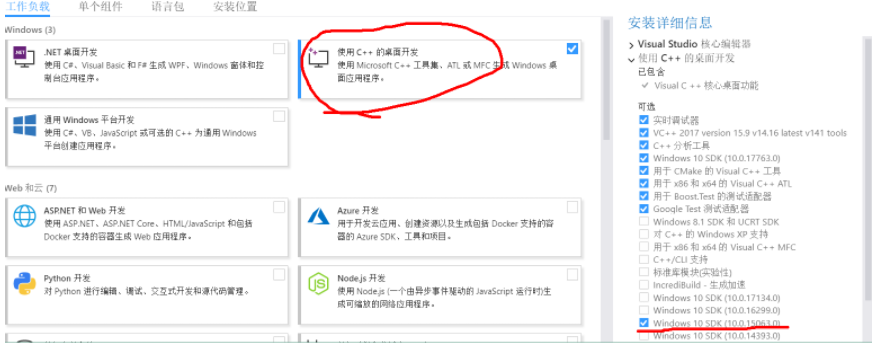在学习编程的过程中,我觉得不止要获得课本的知识,更多的是通过学习技术知识提高解决问题的能力,这样我们才能走在最前方,本文主要讲述Java输入数据流详解,更多Java专业知识,广州疯狂java培训为你讲解;
Java输入数据流
在Java中,我们把能够读取一个字节序列的对象称作一个Java输入数据流;而我们把够写一个字节序列称作一个输出流。它们分别由抽象类 InputStream和OutputStream类表示。因为面向字节的流不方便用来处理存储为Unicode(每个字符使用两个字节)的信息。所以Java 引入了用来处理Unicode字符的类层次,这些类派生自抽象类Reader和Writer,它们用于读写双字节的Unicode字符,而不是单字节字符。
Java.io包简介
JDK标准帮助文档是这样解释Java.io包的,通过数据流、序列和文件系统为系统提供输入输出。
InputStream类和OutputStream类
InputStream类是所有输入数据流的父类,它是一个抽象类,定义了所有Java输入数据流都具有的共通特性。
java.io.InputStream的方法如下:
public abstract read()throws IOException
读取一个字节并返回该字节,如果到输入源的末则返回-1.一个具体的Java输入数据流需要重载此方法,以提供 有用的功能。例如:在FileInputStream类中,该方法从一个文件读取一个字节。
public int read(byte[] b)throws IOException
把数据读入到一个字节数据中,并返回实际读取的字节数目。如果遇到流末 则返回-1,该方法最多读取b.length个字节。
public abstract int read(byte[] b,int off,int len)throws IOException
把数据读入到一个字节数组中并返回实际读取的字节数目。如果遇到流的末尾则的返回-1. 其中参数off表示第一个字节在b中的位置,len表示读取的最大字节数。
public long skip(long n)throws IOException
略过N个字节不读取,会返回实际略过的字节数目。因为数据流中剩下的数据可能不到N个字节那么多,所以此时返回值会小于N.
public int available()throws IOException
read方法(包括后面要讲的OutputStream类的Write方法)都能够阴塞一个线程,直到字节被 实际读取或写入。这意味着如果一个流不能立即被读或被写
* Created on 2005-3-10
* To change the template for this generated file go to
* Window>Preferences>Java>Code Generation>Code and Comments
package mytestfiles;
import java.io.BufferedReader;
import java.io.File;
import java.io.FileReader;
import java.io.FileWriter;
import java.io.IOException;
import java.io.PrintWriter;
* @author zhangqinglin
* To change the template for this generated type comment go to
* Window>Preferences>Java>Code Generation>Code and Comments
public class Files
{
public static void main(String[] args) throws IOException
{
Files f = new Files();
// System.out.println(f.readFile("f:\\LinkFile.java"));
// f.readAllFile("f:\\","LinkFile.java");
// f.readLineFile("f:\\","LinkFile.java");
// System.out.println(f.fileIsNull("f:\\","122.txt"));
// f.readFolderByFile("F:\\PDF");
// System.out.println(f.createAndDeleteFolder("ss","f:\\"));
// System.out.println(f.createAndDeleteFile("f:\\ss\\","TestFile.dat"));
String[] ss = new String[50];
for(int i=0;i{
ss[i] = "信息技术和互联网(计算机软硬件,通讯) "+i;
}
f.writeFile("f:\\ss\\","TestFile.txt",ss);
}
* 文件的写入
* @param filePath(文件路径)
* @param fileName(文件名)
* @param args[]
* @throws IOException
public void writeFile(String filePath,String fileName,String[] args) throws
IOException
{
FileWriter fw = new FileWriter(filePath+fileName);
PrintWriter out=new PrintWriter(fw);
for(int i=0;i{
out.write(args[i]);
out.println();
out.flush();
}
fw.close();
out.close();
}
* 文件的写入
* @param filePath(文件路径)
* @param fileName(文件名)
* @param args
* @throws IOException
public void writeFile(String filePath,String fileName,String args) throws
IOException
{
FileWriter fw = new FileWriter(filePath+fileName);
fw.write(args);
fw.close();
}
* 创建与删除文件
* @param filePath
* @param fileName
* @return 创建成功返回true
* @throws IOException
public boolean createAndDeleteFile(String filePath,String fileName) throws
IOException
{
boolean result = false;
File file = new File(filePath,fileName);
if(file.exists())
{
file.delete();
result = true;
System.out.println("文件已经删除!");
}
else
{
file.createNewFile();
result = true;
System.out.println("文件已经创建!");
}
return result;
}
* 创建和删除目录
* @param folderName
* @param filePath
* @return 删除成功返回true
*/
public boolean createAndDeleteFolder(String folderName,String filePath)
{
boolean result = false;
try
{
File file = new File(filePath+folderName);
if(file.exists())
{
file.delete();
System.out.println("目录已经存在,已删除!");
result = true;
}
else
{
file.mkdir();
System.out.println("目录不存在,已经建立!");
result = true;
}
}
catch(Exception ex)
{
result = false;
System.out.println("CreateAndDeleteFolder is error:"+ex);
}
return result;
}
* 输出目录中的所有文件及目录名字
* @param filePath
public void readFolderByFile(String filePath)
{
File file = new File(filePath);
File[] tempFile = file.listFiles();
for(int i = 0;i{
if(tempFile[i].isFile())
{
System.out.println("File : "+tempFile[i].getName());
}
if(tempFile[i].isDirectory())
{
System.out.println("Directory : "+tempFile[i].getName());
}
}
}
* 检查文件中是否为一个空
* @param filePath
* @param fileName
* @return 为空返回true
* @throws IOException
public boolean fileIsNull(String filePath,String fileName) throws IOException
{
boolean result = false;
FileReader fr = new FileReader(filePath+fileName);
if(fr.read() == -1)
{
result = true;
System.out.println(fileName+" 文件中没有数据!");
}
else
{
System.out.println(fileName+" 文件中有数据!");
}
fr.close();
return result;
}
/**
* 读取文件中的所有内容
* @param filePath
* @param fileName
* @throws IOException
*/
public void readAllFile(String filePath,String fileName) throws IOException
{
FileReader fr = new FileReader(filePath+fileName);
int count = fr.read();
while(count != -1)
{
System.out.print((char)count);
count = fr.read();
if(count == 13)
{
fr.skip(1);
}
}
fr.close();
}
/**
* 一行一行的读取文件中的数据
* @param filePath
* @param fileName
* @throws IOException
*/
public void readLineFile(String filePath,String fileName) throws IOException
{
FileReader fr = new FileReader(filePath+fileName);
BufferedReader br = new BufferedReader(fr);
String line = br.readLine();
while(line != null)
{
System.out.println(line);
line = br.readLine();
}
br.close();
fr.close();
}
}
疯狂Java培训专注软件开发培训,提升学员就业能力,重点提升实践动手能力。没有工作经验的学员,在疯狂java,通过大量全真经典企业级项目进行集中培训,课上讲师讲解和课下项目练习课上课下双管齐下,学员通过数月培训都可获得1-2年的工作经验,进而在同类的求职者中脱颖而出。疯狂Java培训让你体会java编程的快乐,项目开发的兴奋,成就感,通过短短几个月的时间,让你在半年的时间内掌握8-10万的代码量,掌握Java核心技术,迅速成为技能型的现代化高端人才,迅速获得高薪就业!
来源:https://www.cnblogs.com/gojava/p/3284509.html


